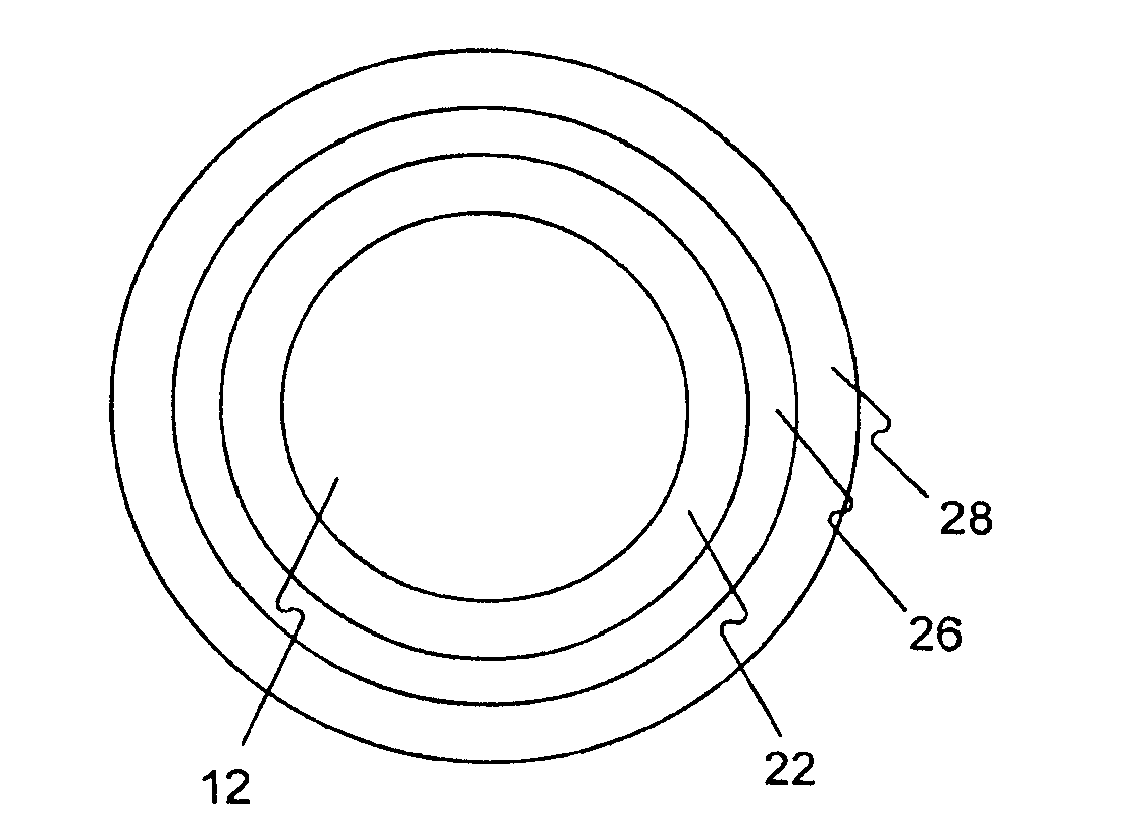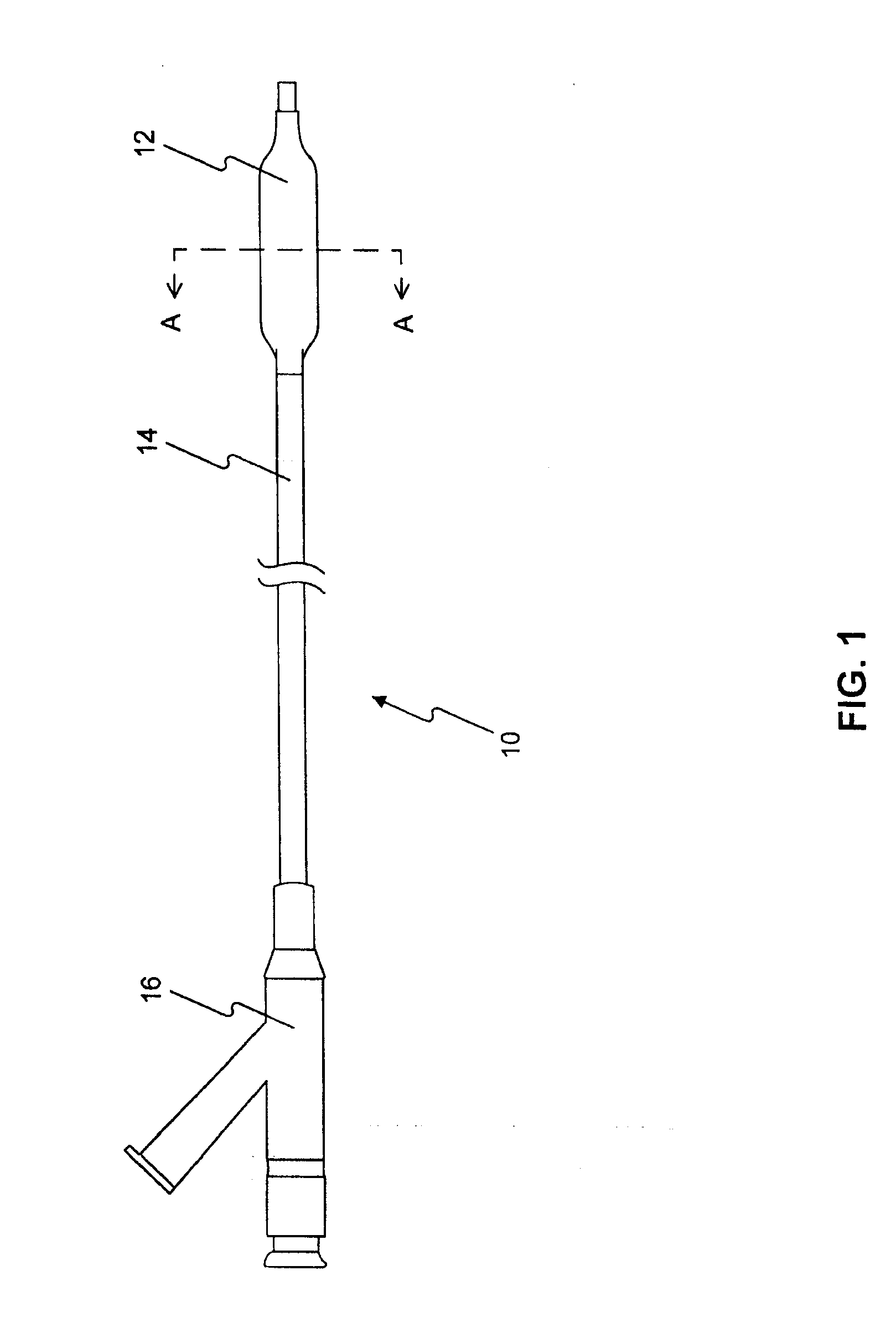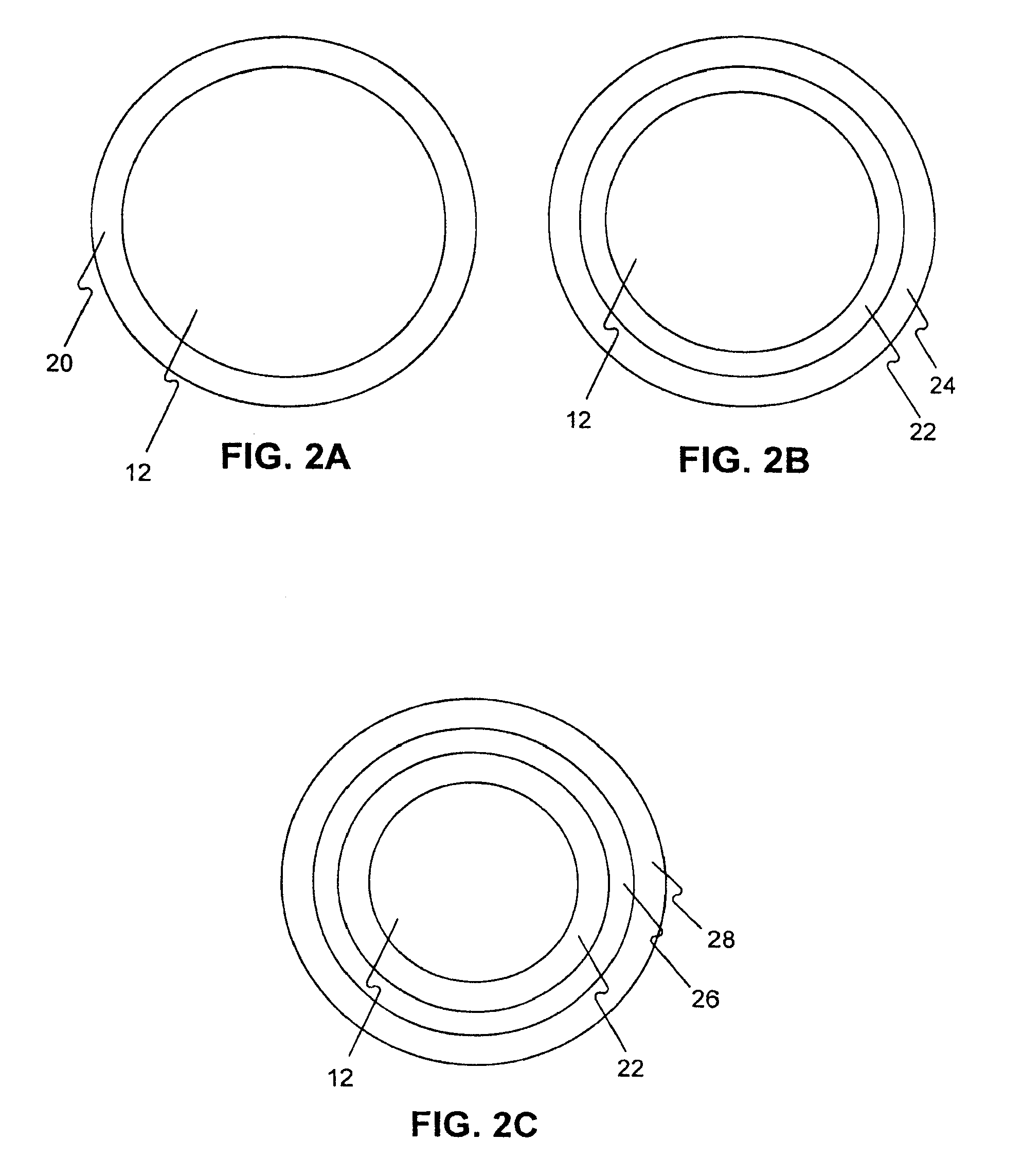Medical device rapid drug releasing coatings comprising a therapeutic agent and a contrast agent
a technology of contrast agent and medical device, which is applied in the direction of catheters, blood vessels, therapy, etc., can solve the problems of affecting the effect of treatment effect, so as to improve the preservation of coating integrity and uniformity of drug distribution, and improve the resistance to mechanical disruption. , the effect of reducing the tendency to coat particles
- Summary
- Abstract
- Description
- Claims
- Application Information
AI Technical Summary
Benefits of technology
Problems solved by technology
Method used
Image
Examples
example 1
Preparation of Coating Solutions
[0259]Formulation 1—50-100 mg (0.06-0.12 mmole) paclitaxel, 1-1.6 ml acetone, 1-1.6 ml ethanol, 50-100 mg iopromide, and 50-100 mg Tween 20 are mixed.
[0260]Formulation 2—50-100 mg (0.06-0.12 mmole) paclitaxel, 1-1.6 ml acetone, 1-1.6 ml ethanol, 50-100 mg iopromide, and 50-100 mg Tween 40 are mixed.
[0261]Formulation 3—50-100 mg (0.05-0.11 mmole) rapamycin, 1-1.6 ml acetone, 1-1.6 ml ethanol, 50-100 mg iopromide, and 50-100 mg Tween 20 are mixed.
[0262]Formulation 4—50-100 mg (0.05-0.11 mmole) rapamycin, 0.5-1.0 ml acetone, 0.5-1.0 ml ethanol, 5-35 mg iopromide, and 35-70 mg Tween 40 are mixed.
[0263]Formulation 5—50-100 mg (0.06-0.12 mmole) paclitaxel, 1-1.6 ml acetone, 1-1.6 ml ethanol, 50-100 mg loversol, and 50-100 mg Tween 20 are mixed.
[0264]Formulation 6—50-100 mg (0.06-0.12 mmole) paclitaxel, 1-1.6 ml acetone, 1-1.6 ml ethanol, 50-100 mg loversol, and 50-100 mg Tween 40 are mixed.
[0265]Formulation 7—50-100 mg (0.05-0.11 mmole) rapamycin, 1-1.6 ml ...
example 2
[0267]5 PTCA balloon catheters (3 mm in diameter and 20 mm in length) are folded with three wings under vacuum. The folded balloon under vacuum is sprayed or dipped in a formulation (1-8) in example 1. The folded balloon is then dried, sprayed or dipped again, dried again, and sprayed or dipped again until sufficient amount of drug on the balloon (3 microgram per square mm) is obtained. The coated folded balloon is then rewrapped and sterilized for animal testing.
example 3
[0268]Drug coated balloon catheters and uncoated balloon catheters (as control) are inserted into coronary arteries in pigs. The balloon is over dilated (1:1.2), and the inflated balloon is held in the vessel for 60 seconds to release drug and additive, then deflated and withdrawn from the pig. The animals are angiographed after 3 days, 31 days, 3 months, 6 months, 9 months and 12 months. The amount of drug in the artery tissues of the sacrificed animal is measured after 60 minutes, 3 days, 31 days, 3 months, 6 months, 9 months and 12 months.
PUM
| Property | Measurement | Unit |
|---|---|---|
| Solubility (mass) | aaaaa | aaaaa |
| Concentration | aaaaa | aaaaa |
| Solubility (mass) | aaaaa | aaaaa |
Abstract
Description
Claims
Application Information
 Login to View More
Login to View More - R&D
- Intellectual Property
- Life Sciences
- Materials
- Tech Scout
- Unparalleled Data Quality
- Higher Quality Content
- 60% Fewer Hallucinations
Browse by: Latest US Patents, China's latest patents, Technical Efficacy Thesaurus, Application Domain, Technology Topic, Popular Technical Reports.
© 2025 PatSnap. All rights reserved.Legal|Privacy policy|Modern Slavery Act Transparency Statement|Sitemap|About US| Contact US: help@patsnap.com



